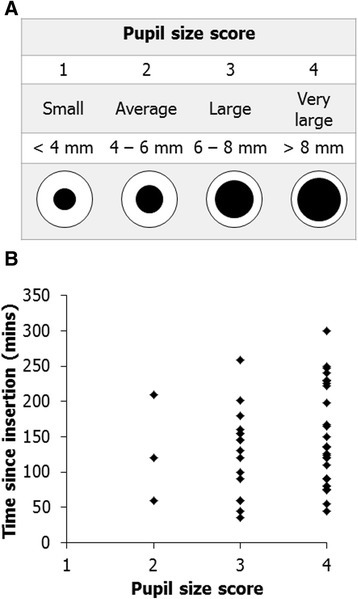

The GCS Pupils Age prognostic charts provide a simple graphical presentation of the probabilities of outcome from traumatic brain injury based on GCS, pupil reactivity, age and CT scan findings. That’s all about Normal Pupil Size for Perrla.Download GCS-PA Charts Using Prognostic Information after a head injury Doctors should know that optic atrophy is not a diagnosis. It cannot eliminate margins in an instant and use the term for diagnosis. Other errors may occur in the examination of the neuro-ophthalmic patient. If the patient has a major complaint called ptosis, then this cannot be explained by the test. If the doctor relies solely on the technician, then the doctor can make a test error. Doctors may choose to leave this test or modify the test to PERRLARAPD. It cannot provide information about anisocoria.
/illo-what-can-my-pupil-eye-size-tell-me-about-my-health-342186-59b1afd322fa3a0011f43d91.png)
This examination can only test the accommodation and parasympathetic to light. The doctor should examine the pupil under light and in the dark room by swinging a flashlight. This test can only check one of three things that the doctor should check. Professor of Ophthalmology in Neurology from Weill Cornell Medical College says that you should stop using this abbreviation. The pupils will widen when they see a close and narrow object when they see a close object. Another source says that the pupil size is 3 to 7 mm. A distant object can cause papillary widening and nearby objects can cause papillary constriction. You can use your index finger that is placed 5 inches from the client’s eye to fix the gaze from the client. You can ask the client to stare at the object across the room. Tests for papillary accommodation are used to examine the size change of the papillary by diverting distant objects to close proximity. Other eyes will be observed for consensual responders. This examination consists of assessing the shape, size, and reaction of the pupil to light. Perrla Pupils Normal Pupil Size for Perrla Prescription eye drops such as OTC can affect pupil dilation. Patients who have performed cataract surgery have uneven pupils so that the patient does not have a quick response to light coming into the eye. The pen lights will be part of the equipment other than the stethoscope. You should not protect your eyes with one hand. The nurse can use a simple pen light to perform the test and this only takes a minute or two. Signs of severe neurological injury can alter the reactivity and size of the pupil. The reactivity, size, and shape of the pupil may be affected by blindness, surgery, and medication. There is a slight increase in diameter of two or one seconds after your eyes get a bright light. Normal responders are both must have the same reaction and fast. The nurse will carry a small ray from outside the corner of the eye to check the reactivity of the pupil. You’ll see some acronyms associated with those results. Simple tests that will be performed by the nurse will determine the normal eye except of perrla eyes. There are patients who have performed cataract surgery so that it has an irregular pupil shape. This is a normal condition called anisocoria. There are some people who have one pupil smaller than the other. The pupil’s response will be controlled by the cranial nerves III, IV, and VI as your eyes move. Normal pupils must have the same size bilaterally. Normal Pupil Size for Perrla is 2 to 6 mm and round.


 0 kommentar(er)
0 kommentar(er)
